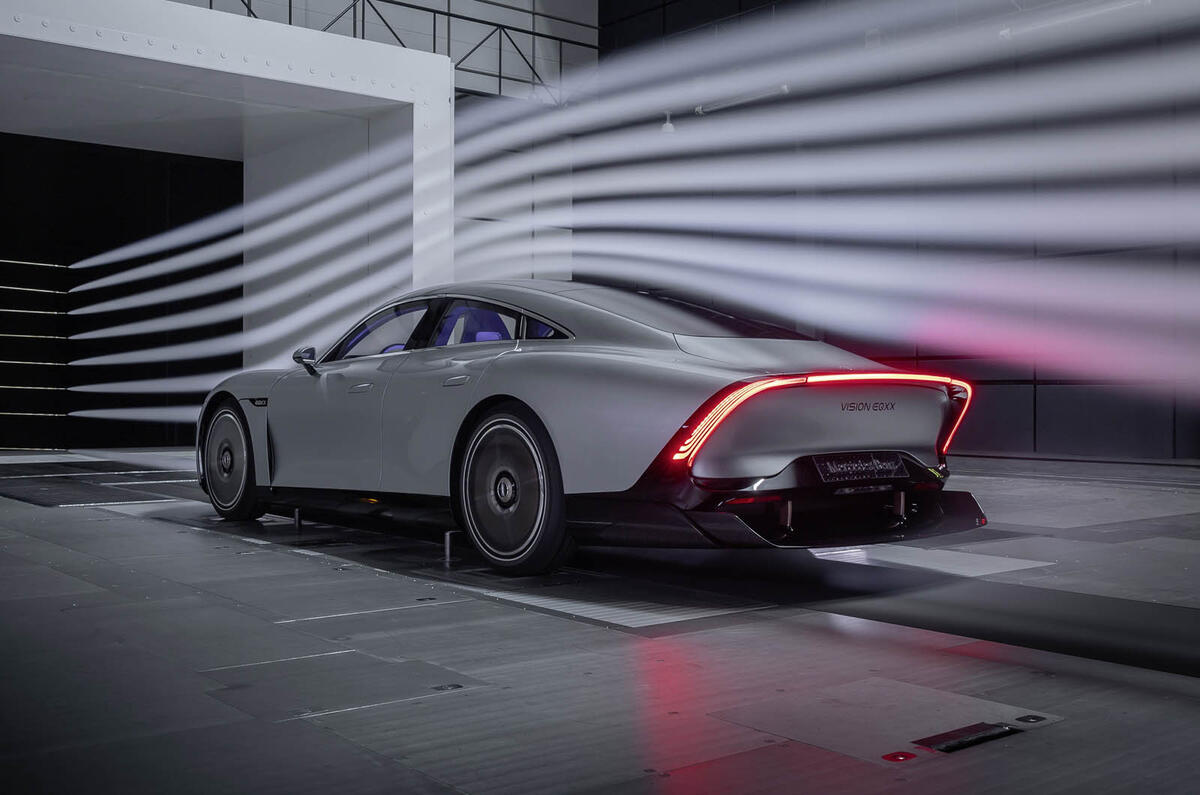The new Mercedes-Benz Vision EQXX concept is interesting in its own right, but doubly so because it serves as a physical acknowledgment of a harsh truth for car makers: bigger batteries aren’t a one-size-fits-all solution to making electric vehicles more usable.
Radical new construction methods, lightweighting processes and, of course, painstaking attention to aerodynamic detail will be utterly crucial as EVs start being produced at volumes comparable to fossil fuel-burners, and especially so given the cross-industry focus on sustainability.
However, although the benefits of the EQXX’s design and positioning are plain as day, its principles can’t be applied so readily to bulbous, high-riding SUVs, which are the spécial du jour and look certain to remain so on the menu for the coming years.
We are therefore likely to see elements from the concept rolled out gradually to other production models, rather than a showroom-ready version of the EQXX itself.
Already, though, Mercedes has hit the ground running with EV equivalents of its ever-popular Mercedes-Benz E-Class and Mercedes-Benz S-Class models in the form of the EQE and Mercedes-Benz EQS, respectively, and an EV alternative to the C-Class is on the cards for after 2024. Clearly, reports of the saloon segment's death are much exaggerated, it's just that the conventional three-box silhouette – which surely any child would return if asked to draw a car – needs rounding off to best suit electric propulsion.
Indeed, some of the most impressive range figures of all EVs on sale today are touted by monolithic saloons like the Porsche Taycan, Lucid Air, Tesla Model 3 and the EQS itself. Eventually, the toss-up between 10 miles of added range or 10mm of extra headroom will surely become a deciding factor in the future of the all-conquering SUV.
Perhaps the ultimate truth is that to go further, we must sit lower, and sleek, slippery saloons such as this will soon come back into fashion as the EV mile-munchers that we so sorely crave.




Join the debate
Add your comment
How about this idea then, a Car brand creates the 21st Century peoples Car, a Car with what we really need in our daily driver, not things that are a distraction, things that take our mind of actually driving safely, a Car that is cheap to run, can seat four comfortably.
I get paid more than $90 to $100 per hour for working online. I heard about this job 3 months ago and after joining this I have earned easily $10k from this without having online working skills . Simply give it a shot on
the accompanying site.... Profitloft.ga
Hasn't the Tesla Model 3 already done that? (saved the saloon)